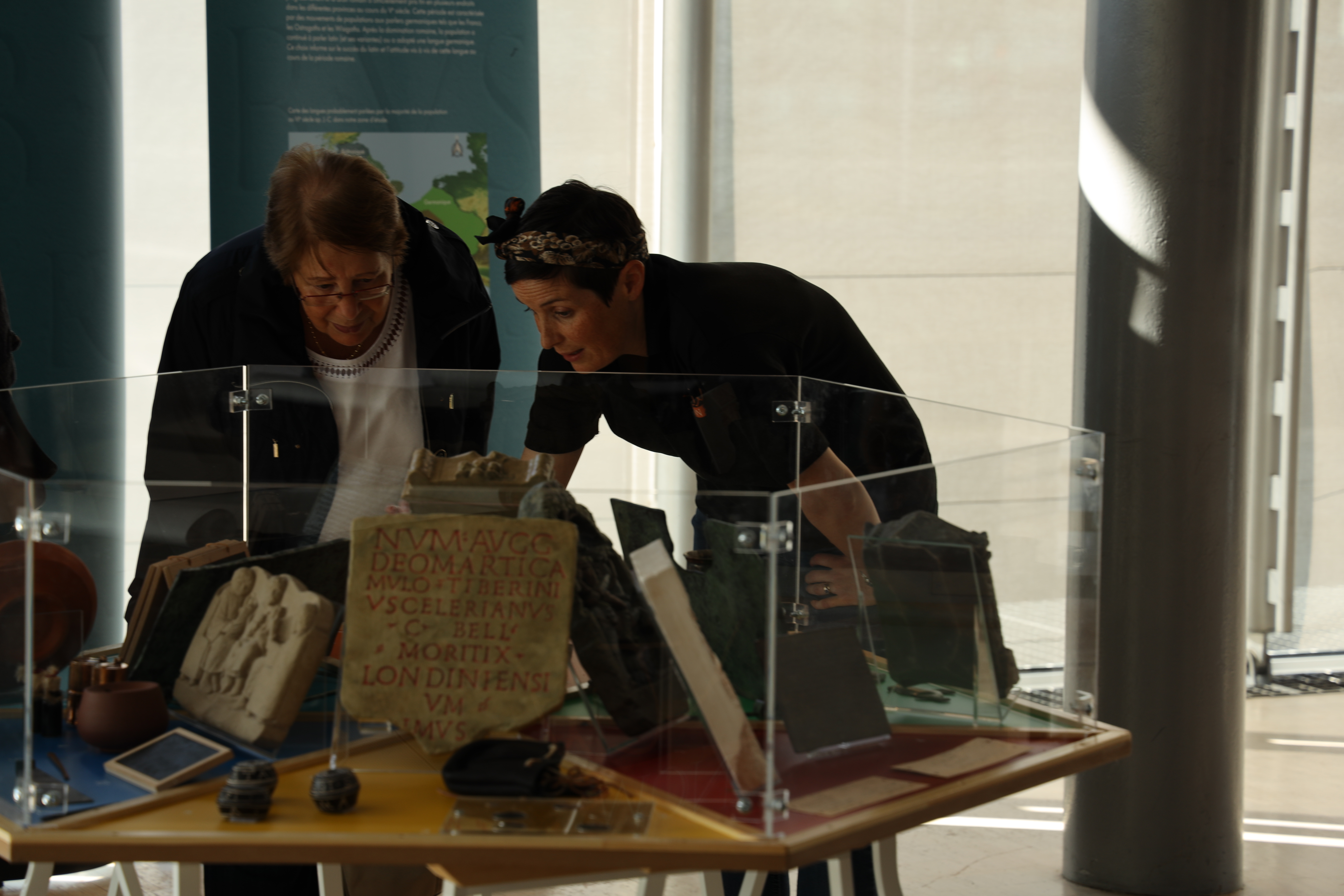By Alex Mullen

Over the past few weeks I’ve returned to some of my favourite inscribed small objects from the Roman world, and have been finishing a chapter for a volume edited by Eleri Cousins (Lancaster). It’s on new approaches to epigraphy and is a result of the panel Eleri ran at the Celtic Conference in Classics at St Andrews in summer 2018. I talked about my experience at the conference here. I’m excited about finally committing my thoughts on these items to print, having spoken about them numerous times now, not least because I’m offering a new concept from modern sociolinguistics to think about the linguistic phenomenon we see in them: translingualism.

First things first, what are these objects? For a time there was a bit of uncertainty. Some early commentators thought they could be beads for jewellery. In 1914 the French scholar Héron de Villefosse published a little corpus of them and correctly identified them as spindle whorls – the small weights placed at the end of the spindle to help regulate the speed of the spin. Wool is spun before being woven and huge numbers of these items were used across the provinces in the Roman period. This inscribed collection of whorls, now numbering two dozen, is unusual in that whorls are not otherwise, to our knowledge, inscribed in Latin in the Roman period (there are a few examples in Palaeohispanic and other non-Latin languages). The other unusual thing is that this set is made from the same material – namely the bituminous schist from the quarries of Autun in France. Half the known examples were found in that major Roman centre (then called Augustodunum), the rest in eastern France, with a couple of outliers in Trier (Germany) and Nyon (Switzerland). It seems very likely that these inscribed objects were made in Autun.

The messages carved in capitals and showing knowledge of monumental stone epigraphy make the objects ‘speaking’ ones, usually, it seems, addressing the spinner, though some could plausibly be the whorl addressing the spindle. Some are in Latin AVE DOMINA SITIIO ‘greetings lady, I’m thirsty’, SALVE SOROR ‘hey sister’, some in Gaulish, the Celtic language of Gaul, GENETTA IMI DAGA VIMPI ‘I’m a good, pretty girl’, and some are a mixture of languages NATA VIMPI VI(nu?)M POTA ‘pretty girl drink wine’. A few of the messages are overtly amatory/erotic, for example the Gaulish MONI GNATHA GABI BUÐÐUTON IMON ‘Come girl, take my kiss/cock’. As a result commentators have tried to find salacious subtext in all the examples and have said that they are all gifts of men to women.

In my chapter I assess what we know, and don’t know, about these objects, considering the contextual and other clues and unpicking the assumptions (about literacy, gender stereotypes, cultural environments, language…) underlying our scholarship over the decades. I use a sociolinguistic and archaeological approach to the epigraphy to try to reconstruct a series of plausible scenarios for the creation and use of these items. For example, there’s no clear reason to assume a male author/commissioner in all the cases. If we are willing to consider the possibility that some of these texts are used by women who may be working in groups in workshops, we might wonder whether some of these messages may have been created by women for other members of the group, and themselves, to enjoy. The black schist whorl with white lettering would have created a striking party piece, spinning so that the object becomes a blur and then gently slowing to reveal the inscribed message. Co-workers in close quarters working on relatively monotonous tasks will often create distractions for themselves, for example work songs and in-group stories, language and humour.

So far these texts have been analysed in terms of distinct languages, Latin and Gaulish, and of the way in which those languages combine to produce a mixed language (Meid) or code-switching, where the language switches mid-utterance (Adams). However, some of these texts can be read simultaneously as both Latin and Gaulish, due to the use of words which work in both languages. The terminology of bilingualism currently used in Classics does not cope well with such flexible ‘homophonic’ use of linguistic resources. At a conference of modern sociolinguistics I encountered a concept which could be useful to us: translingualism. This can refer to the flexibility of multilingual linguistic repertoires: speakers can switch, merge, and choose to use language which simultaneously works for more than one speech community. Translingualism reminds us that standard languages do not necessarily mean much when it comes to the realities of fluid linguistic communication in highly multilingual environments. In a pre-nation state context such as Roman Gaul perhaps the creators of the spindle whorls did not see language in such black and white terms.
References
Adams, J. 2003 Bilingualism and the Latin Language (Cambridge)
Meid, W. 1983 ‘Gallisch oder Lateinisch? Soziolinguistische und andere Bemerkungen zu populären gallo-lateinischen Inschriften’ ANRW II.29.2, 1019-1044